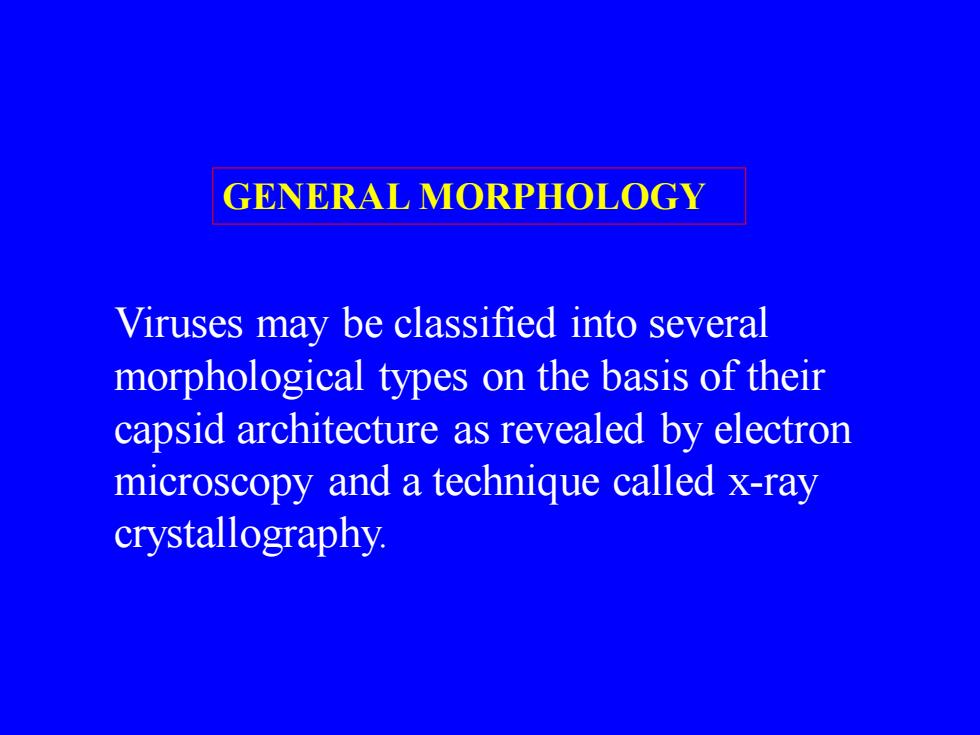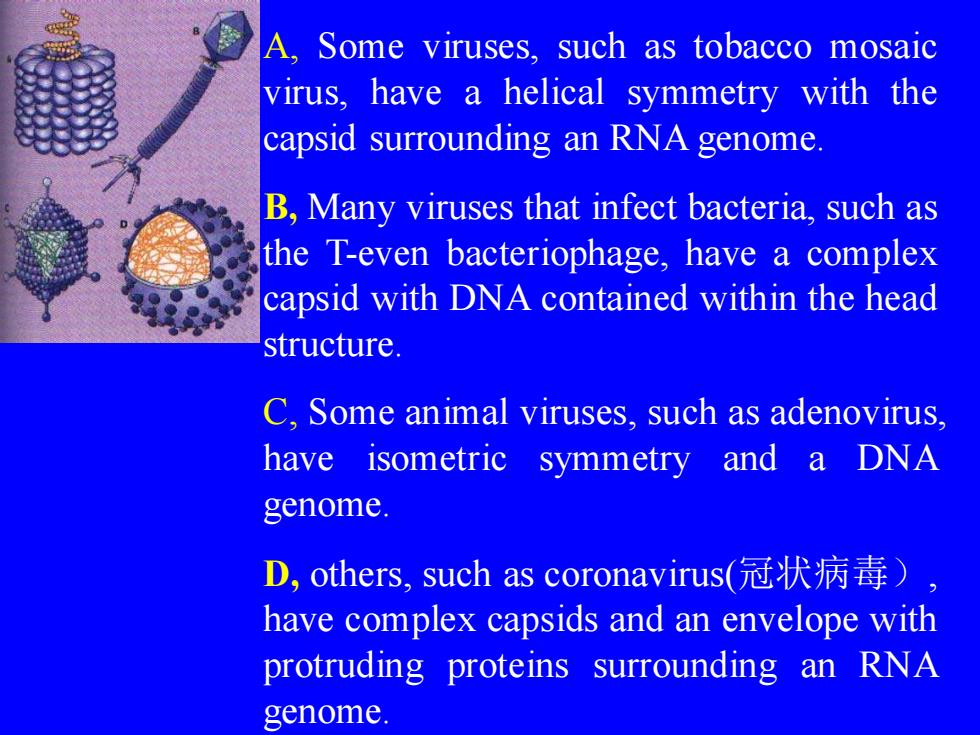
Viruses may be classified into several morphological types on the basis of their capsid architecture as revealed by electron microscopy and a technique called x-ray crystallography. GENERAL MORPHOLOGY
Viruses may be classified into several morphological types on the basis of their capsid architecture as revealed by electron microscopy and a technique called x-ray crystallography. GENERAL MORPHOLOGY

A, Some viruses, such as tobacco mosaic virus, have a helical symmetry with the capsid surrounding an RNA genome. B, Many viruses that infect bacteria, such as the T-even bacteriophage, have a complex capsid with DNA contained within the head structure. C, Some animal viruses, such as adenovirus, have isometric symmetry and a DNA genome. D, others, such as coronavirus(冠状病毒), have complex capsids and an envelope with protruding proteins surrounding an RNA genome
A, Some viruses, such as tobacco mosaic virus, have a helical symmetry with the capsid surrounding an RNA genome. B, Many viruses that infect bacteria, such as the T-even bacteriophage, have a complex capsid with DNA contained within the head structure. C, Some animal viruses, such as adenovirus, have isometric symmetry and a DNA genome. D, others, such as coronavirus(冠状病毒), have complex capsids and an envelope with protruding proteins surrounding an RNA genome